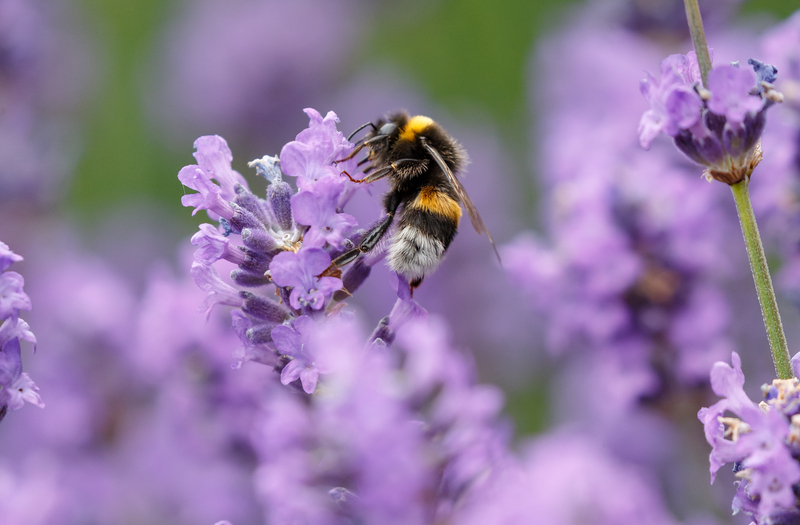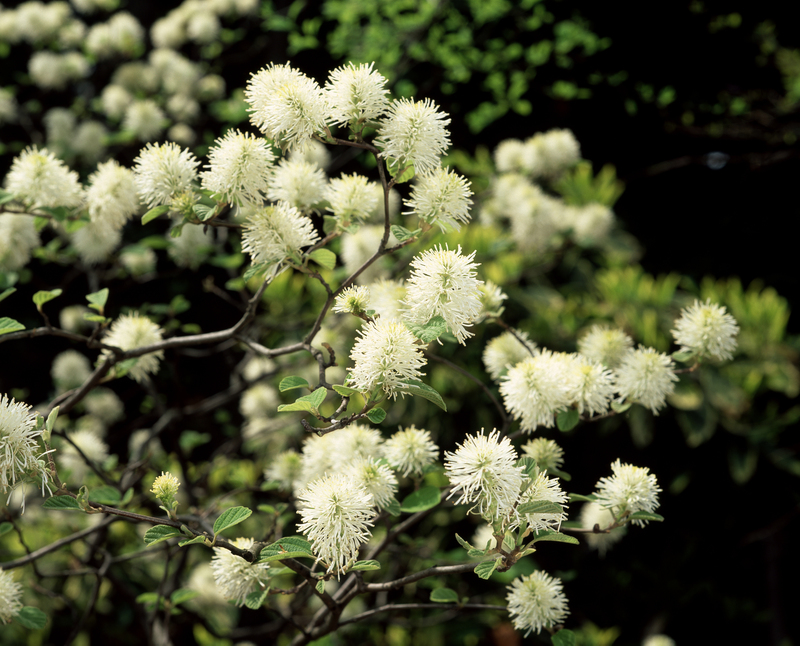Gardener's Guide: Vital Winter Protections for Your Plant
Posted on 06/06/2025
Gardener's Guide: Vital Winter Protections for Your Plant
Winter can be a challenging season for both experienced horticulturists and new plant enthusiasts. Many plants, especially those not native to colder climates, face numerous threats during the frosty months. Temperatures drop, sunlight wanes, and harsh winds can turn a healthy garden into a tableau of wilt and decay. However, with the right winter plant protection techniques, you can ensure that your garden not only survives but also thrives come spring. This detailed gardener's guide offers comprehensive, time-tested advice for safeguarding your cherished greenery during the coldest part of the year.
Why Is Winter Plant Protection Essential?
Understanding the necessity of winter protection for plants starts with recognizing how cold, wind, and moisture affect plant health. Even hardy perennials can suffer from frost damage, root rot, desiccation, and sudden temperature fluctuations. Protecting your plants ensures:
- Reduced risk of permanent damage from extreme weather.
- Increased survival rates for delicate species.
- Improved spring regrowth and flower production.
- Enhanced soil quality and microbial health into the growing season.
Investing time now reaps robust, healthy plants later. Whether you are nurturing roses, shrubs, vegetables, or tropicals, understanding the specific needs of your species is the cornerstone of effective winter garden care.

Preparing Your Garden for Winter: The Basics
Before deploying any specific winter protection methods, preparation is key. Here's how to get started on your winterizing garden checklist:
1. Clean Up the Garden
Remove dead or diseased foliage, spent annuals, and fallen fruit. This not only prevents the spread of pests and diseases but also gives you a clean slate for winter protection efforts.
2. Mulch Strategically
Adding a layer of organic mulch insulates roots and stabilizes soil temperatures. Materials such as straw, wood chips, shredded leaves, or pine needles are excellent choices. Apply 2-4 inches of mulch around the base of perennials, shrubs, and trees, taking care not to pile mulch directly against stems.
3. Prune with Care
While some trees and shrubs benefit from winter pruning, avoid heavy cuts on vulnerable species, as open wounds may not heal quickly in cold weather. Instead, focus on removing damaged or dead wood.
4. Water Wisely
Plants still need moisture in winter, especially evergreens. Give your garden a deep watering before the ground freezes, which helps roots access water in dry spells.
Vital Winter Protections for Your Plant: Proven Methods
Now, let's delve into the most effective ways to protect plants from winter cold and environmental stressors. Every garden is different, so tailor these approaches to your region and plant types.
1. Covering and Wrapping Plants
Physical barriers are a gardener's first line of defense against freezing temperatures, windburn, and frostbite. Consider the following methods:
- Frost cloths or floating row covers: Lightweight, breathable fabric sheets can be draped over beds and frames to shield delicate annuals, veggies, and young perennials from cold snaps.
- Burlap wraps: Burlap is ideal for wrapping shrubs and young trees, especially evergreens and roses. It offers wind protection and reduces moisture loss while allowing air circulation.
- Horticultural fleece: Provides insulation and light transmission, perfect for protecting container plants on patios and porches.
- Plastic sheeting: Use with caution--plastic holds in heat but can cause condensation, potentially leading to rot. Always ensure adequate ventilation.
2. Windbreaks and Microclimates
Wind can strip moisture from foliage, especially evergreens, and expose roots. Set up windbreaks to create sheltered areas using:
- Temporary fencing or walls of straw bales on the windward side.
- Strategically placed evergreens or dense shrubs.
- Homemade structures using stakes and burlap sheets.
Creating microclimates in your garden by grouping plants, using rocks, or leveraging natural slopes can also raise local temperatures and reduce exposure.
3. Protecting Roots and Soil Structure
Roots are particularly vulnerable to freezing. In addition to mulch, consider:
- Raised beds: These drain better and, with heavy mulch and covers, keep roots warmer.
- Compost top-dressing: Adds nutrients for spring and helps buffer soil against harsh winter changes.
If you have container plants, elevate pots off cold concrete with pot feet or bricks, and group them together for shared warmth. Wrap containers in bubble wrap or burlap to buffer roots from flashing temperature changes.
4. Special Care for Evergreens and Trees
Evergreens may continue losing water during winter, especially in wind. To safeguard them:
- Water well before freeze-up as previously noted.
- Anti-desiccant sprays: These create a protective layer on needles or leaves to minimize moisture loss. Only use as per product instructions and on compatible species.
- Tree wraps: Prevent sunscald and frost cracks on young or thin-barked trees.
5. Managing Snow and Ice
While snow acts as a natural insulator, excessively heavy snow and ice can break branches and damage evergreens or shrubs.
- Gently brush off heavy snow from branches after storms, but avoid shaking frozen limbs as they may snap.
- Avoid salt for de-icing near garden beds, as runoff can damage roots and change soil chemistry.
How to Protect Different Types of Plants in Winter
Each plant type has unique needs when it comes to winter survival strategies. Here are guidelines for the most common categories:
Perennials
- After the first frost, cut back foliage to reduce disease but leave 2-3 inches of stem for crown protection.
- Mulch deeply to insulate against freeze-thaw cycles.
- Check periodically for signs of rot or heaving, which can expose roots to the air.
Annuals
- Most won't survive the winter. Remove them entirely, unless overwintering is feasible indoors (such as for geraniums or begonias).
Shrubs and Roses
- For tender roses, mound mulch or compost around the base after the ground freezes.
- Wrap shrub roses or delicate shrubs in burlap for wind and cold protection.
Container Plants
- Bring tropicals or houseplants indoors well before first frost.
- For hardy perennials in pots, insulate the container and group them near a sheltered wall.
Vegetable Gardens
- Use row covers, cold frames, or mini greenhouses to extend the harvest or protect overwintering crops like garlic and broad beans.
Lawns and Ground Covers
- Avoid heavy traffic on dormant lawns to reduce compaction and breakage.
- Consider applying a winterizer fertilizer in late fall for established turf.
Common Winter Gardening Mistakes to Avoid
Even seasoned gardeners make errors in their winter plant care routines. Here are pitfalls to sidestep:
- Applying mulch too early: Wait until after the first hard frost to discourage rodents and pests from nesting.
- Heavy pruning in autumn: Pruned soft growth is more susceptible to frost damage.
- Neglecting to water evergreens: Dry soil leads to desiccation during cold, sunny spells.
- Ignoring microclimates: Some garden corners may be warmer or colder--use this to your advantage.
Essential Tools & Supplies for Winter Plant Protection
To get the best out of your winter plant protection strategies, assemble these vital gardening tools and materials:
- Mulch (straw, bark, pine needles, leaves)
- Burlap or frost covers
- Horticultural fleece and row cover hoops
- Garden stakes and twin, for securing wraps and covers
- Anti-desiccant sprays for broadleaf evergreens
- Compost and leaf mold
- Raised bed frames or cold frames, for veggie gardens
- Bubble wrap and frost blankets for containers
- Quality pruners and loppers for end-of-season trimming
Advanced Winter Plant Protection Tips
If you aim for an ultra-resilient winter garden, consider these expert strategies:
- Install soil thermometers to monitor ground temperatures, ensuring accurate timing for mulching or watering.
- Trial different mulch depths for various plant types based on their hardiness and the severity of your winters.
- Utilize garden apps or journals to log successes and identify patterns for future winters.
- For rare or expensive plants, consider temporary winter greenhouses, unheated hoop houses, or moving plants indoors for critical weeks.

Frequently Asked Questions about Winter Plant Protection
Should I cover all plants for winter?
Not necessarily. Focus on tender, young, or newly transplanted plants. Hardy natives and mature perennials may need only basic mulching.
What is the best mulch for winter protection?
Straw, shredded leaves, and pine needles are excellent for most plants. Avoid using whole leaves unless shredded, as they can mat down and prevent air circulation.
Can I use plastic to cover plants?
Plastic provides good insulation but requires careful ventilation to avoid trapping moisture and causing rot. Never place plastic directly against foliage; always use hoops or frames to keep it off the plants.
How often should I check my winterized plants?
Check every couple of weeks, especially after heavy snow, thaw, or windstorms. Remove any wet or matted materials and ensure covers remain secure.
Conclusion: Protecting Your Garden Through Winter
Implementing vital winter protections for your plants is about more than mere survival--it's an investment in lush, vibrant growth for the season ahead. By cleaning up, mulching wisely, covering and wrapping at-risk plants, and tailoring care to each species, you'll safeguard your garden against the toughest of winters. With the right preparation and diligence, winter becomes an opportunity for your garden to rest, rejuvenate, and prepare for a stunning spring resurgence. Remember, a little attention now can yield multitudes of blossoms, fruit, and verdant foliage in coming months.
For more detailed guides on winter garden care, seasonal plantings, and year-round plant protection, explore our other articles - and enjoy your best garden, whatever the weather!

